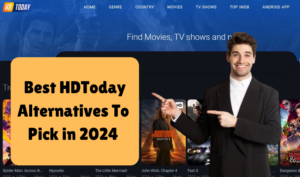
Mastering Targeting Strategies in Facebook Advertising
Facebook has revolutionized digital marketing with its powerful advertising platform, allowing businesses to reach highly targeted audiences with precision. Effective targeting strategies are key to maximizing the impact and ROI of Facebook advertising campaigns. In this blog, we explore various targeting strategies used by Facebook Ads marketing agencies to optimize ad performance and achieve marketing goals.
Introduction to Facebook Advertising Targeting
Facebook’s advertising platform offers robust targeting options that enable advertisers to reach specific demographics, interests, behaviors, and locations. Targeting strategies ensure ads are shown to the most relevant audience segments, increasing the likelihood of engagement, conversions, and brand awareness.
Understanding Audience Segmentation
1. Demographic Targeting:
Demographic targeting focuses on factors such as age, gender, education, occupation, marital status, and household income. This strategy helps businesses tailor their messaging to resonate with specific demographic groups most likely to be interested in their products or services.
2. Interest-Based Targeting:
Interest-based targeting allows advertisers to target users based on their interests, hobbies, activities, pages liked, and content engaged with on Facebook. Agencies leverage this strategy to align ads with users’ passions and preferences, ensuring relevance and capturing attention effectively.
3. Behavioral Targeting:
Behavioral targeting targets users based on their online behaviors, such as purchase behavior, device usage, travel preferences, and interactions with brands. Agencies use this data to create personalized ads that appeal to users’ purchasing intent and behaviors, driving higher conversion rates.
Advanced Targeting Techniques
1. Custom Audiences:
Custom Audiences enable advertisers to target existing customers or leads by uploading email lists, phone numbers, or website visitors. This strategy allows agencies to nurture relationships, re-engage past customers, and optimize ad spend by focusing on high-potential audiences.
2. Lookalike Audiences:
Lookalike Audiences help agencies expand their reach by targeting users who share similarities with their existing customer base. Facebook analyzes data points such as demographics, interests, and behaviors to identify users with profiles similar to the custom audience, maximizing campaign reach and effectiveness.
Geographical Targeting and Localized Campaigns
1. Geographical Targeting:
Geographical targeting allows advertisers to specify locations where ads will be shown, such as countries, states, cities, or even specific zip codes. This strategy is vital for businesses with regional or local target markets, ensuring ads are seen by relevant audiences in targeted locations.
2. Localized Campaigns:
Localized campaigns focus on hyper-targeting users in specific geographical areas with tailored messaging and offers. Facebook Ads marketing agencies optimize localized campaigns to drive foot traffic, promote local events, or boost sales in targeted regions, enhancing local market presence effectively.
Behavioral Retargeting and Dynamic Ads
1. Behavioral Retargeting:
Behavioral retargeting targets users who have previously interacted with a brand’s website, app, or content. Agencies use retargeting ads to re-engage potential customers, remind them of products or services of interest, and encourage conversions through personalized messaging and offers.
2. Dynamic Ads:
Dynamic ads automatically promote relevant products or services to users based on their browsing behavior or past interactions with a brand. Digital marketing agencies leverage dynamic ads to deliver personalized content in real-time, optimizing ad relevance and driving conversions effectively.
Measuring Targeting Effectiveness and Optimization
1. Key Performance Indicators (KPIs):
Agencies measure targeting effectiveness using KPIs such as click-through rate (CTR), conversion rate, cost per acquisition (CPA), and return on ad spend (ROAS). These metrics provide insights into ad performance, audience engagement, and campaign success, guiding optimization strategies for continuous improvement.
2. A/B Testing and Optimization:
A/B testing involves testing different ad creatives, targeting options, or ad formats to identify the most effective combinations. Agencies conduct rigorous testing to refine targeting strategies, improve ad performance, and maximize ROI for clients’ Facebook advertising campaigns.
Conclusion
In conclusion, mastering targeting strategies in Facebook advertising is essential for maximizing ad relevance, engagement, and conversions. Facebook Ads marketing agencies leverage demographic, interest-based, behavioral, and advanced targeting techniques to reach the right audience segments with personalized messaging and offers. By understanding audience preferences, behaviors, and purchasing intent, agencies optimize ad spend, drive meaningful results, and achieve marketing objectives effectively.
As businesses navigate the complexities of digital marketing services, partnering with a skilled Facebook Ads marketing agency ensures access to expertise, innovative strategies, and data-driven insights that elevate advertising effectiveness and business growth. Embracing targeted advertising on Facebook enables businesses to stay competitive, engage audiences authentically, and achieve measurable success in today’s digital landscape.


